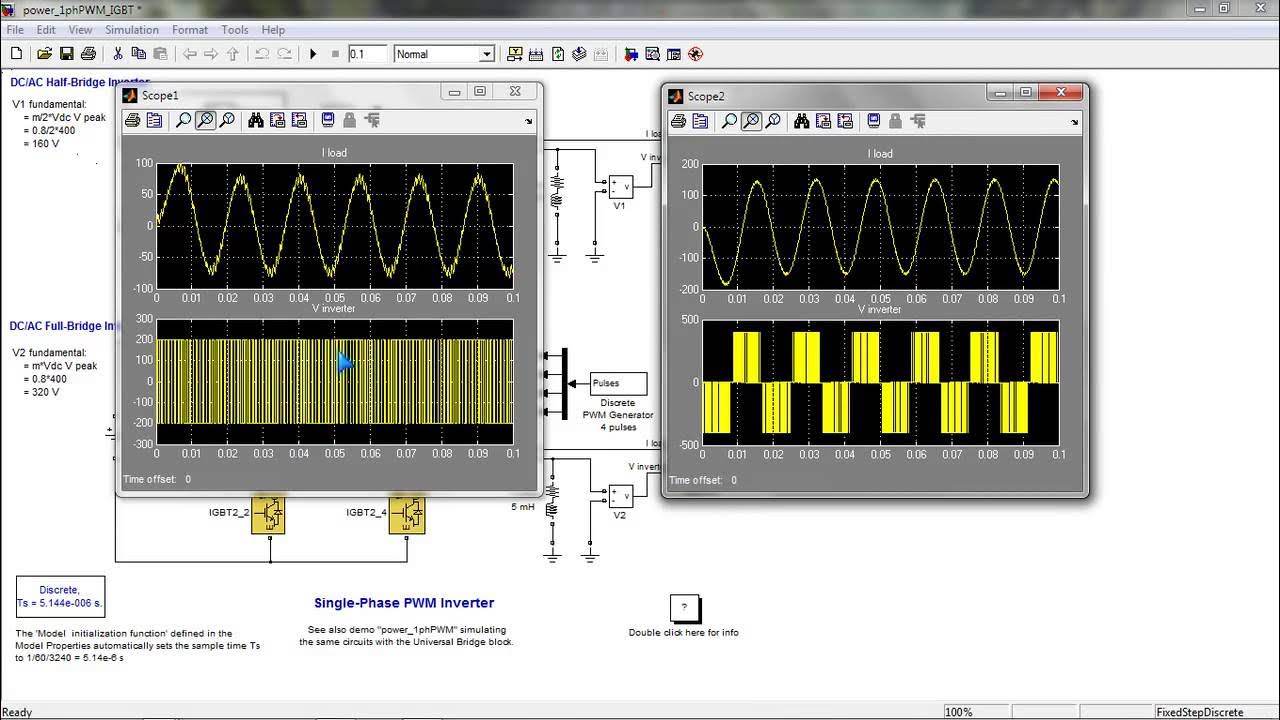SIMULATION STUDY OF GALLIUM NITRIDE BASED INVERTER FOR ELECTRIC VEHICLE APPLICATION USING MATLAB
Summary
TLDRThis presentation discusses the simulation study of a gallium nitride (GaN) based inverter for electric vehicle (EV) applications, utilizing MATLAB. The project aims to analyze the performance of GaN-based inverters and compare them to silicon carbide (SiC) inverters. Key objectives include evaluating efficiency, conduction loss, and switching loss. The study highlights GaN's potential in reducing energy conversion losses and improving overall inverter performance. Through simulations, it shows a significant reduction in both conduction and switching losses, making GaN a promising technology for the future of electric vehicles.
Takeaways
- 😀 The project investigates the use of Gallium Nitride (GaN) inverters for electric vehicles (EVs) to improve energy conversion efficiency.
- 😀 The key problem addressed is the low efficiency of traditional inverters in electric vehicles, which affects energy conversion from DC to AC.
- 😀 Gallium Nitride (GaN) MOSFETs are identified as a solution due to their high electron mobility, high voltage operation, and high switching frequency capabilities.
- 😀 A major concern in electric vehicles is thermal management of inverters, which can decrease performance if temperatures are too high.
- 😀 The project compares GaN-based inverters with Silicon Carbide (SiC) based inverters, with GaN MOSFETs showing higher performance in terms of reduced losses.
- 😀 The simulation is carried out using MATLAB and Simulink, with the addition of the Synscape extension to model the characteristics of GaN and SiC MOSFETs.
- 😀 Results show that GaN-based inverters reduce conduction losses by 22% compared to SiC-based inverters, making them more efficient.
- 😀 The voltage drop in GaN-based inverters is lower (299V) compared to SiC-based inverters (297V), indicating better performance under similar conditions.
- 😀 The switching loss of GaN MOSFETs is lower than SiC MOSFETs, with GaN maintaining a more efficient operation as switching frequency increases.
- 😀 Recommendations for future work include using MATLAB 2018b to avoid compatibility issues, testing temperature ranges for better accuracy, and using motor models for more realistic load testing.
Q & A
What is the main focus of this FYP (Final Year Project)?
-The main focus of the project is to analyze and simulate the performance of a gallium nitride (GaN) based inverter for vehicle applications, comparing it with a silicon carbide (SiC) based inverter using MATLAB and Simulink.
Why are electric vehicles considered eco-friendly?
-Electric vehicles (EVs) are considered eco-friendly because they produce zero emissions, reducing carbon dioxide and other greenhouse gases. They use clean energy sources such as hydroelectric power, especially in countries like Norway where EV adoption is high.
What is the role of an inverter in an electric vehicle?
-The inverter in an electric vehicle converts the DC power generated by the battery into AC power to drive the vehicle's three-phase motor. Its efficiency plays a crucial role in the overall performance of the EV.
What problem does this project aim to address regarding inverters in EVs?
-This project aims to address the low efficiency of energy conversion in inverters, which leads to energy loss. It proposes using wide bandgap semiconductors like gallium nitride (GaN) to improve efficiency and reduce energy loss.
What are the key advantages of gallium nitride (GaN) over traditional silicon-based semiconductors in inverters?
-Gallium nitride (GaN) semiconductors offer several advantages, including higher switching frequencies, better voltage handling, and improved electron mobility compared to traditional silicon-based semiconductors. This leads to reduced energy losses and better overall inverter performance.
What are the objectives of this project?
-The project has two main objectives: first, to analyze the performance of a GaN-based inverter in an electric vehicle application, and second, to compare its performance with that of a silicon carbide (SiC) based inverter.
How does the project approach its methodology?
-The project follows a three-stage methodology: 1) Exploration of electric vehicles, inverters, and GaN semiconductors; 2) Building and simulating circuits with GaN and SiC MOSFETs; and 3) Comparing the performance of the inverters using these materials.
What software tools are used for simulation in this project?
-The project uses MATLAB and Simulink for simulation. Simulink, with its block diagram-based simulation, is extended with the Simscape tool for simulating electronic devices, and the data from MOSFET datasheets are utilized for performance analysis.
What were the key findings regarding the output characteristics of GaN and SiC MOSFETs?
-The GaN MOSFET showed a significantly higher drain current compared to the SiC MOSFET at the same gate voltage. This indicates that GaN MOSFETs can generate more current, leading to better overall performance in the inverter.
What conclusions were drawn regarding the performance of GaN-based inverters?
-The GaN-based inverter demonstrated a 22.73% reduction in total inverter losses, mainly due to lower conduction and switching losses. GaN-based inverters showed a higher potential in controlling energy losses compared to SiC-based inverters.
Outlines

This section is available to paid users only. Please upgrade to access this part.
Upgrade NowMindmap

This section is available to paid users only. Please upgrade to access this part.
Upgrade NowKeywords

This section is available to paid users only. Please upgrade to access this part.
Upgrade NowHighlights

This section is available to paid users only. Please upgrade to access this part.
Upgrade NowTranscripts

This section is available to paid users only. Please upgrade to access this part.
Upgrade NowBrowse More Related Video

Hiroshi Amano, Nobel Prize in Physics 2014: Nobel Lecture

My Video Resume | Mithesh Kumaar S | SNS College of Technology

Inverter_simulink

EV range could skyrocket 20% with new LMFP magnesium doped battery

Which charger should you buy for your smartphone?

Battery driven Electric vehicle with regenerative Braking operation | Electric vehicle Simulation |
5.0 / 5 (0 votes)